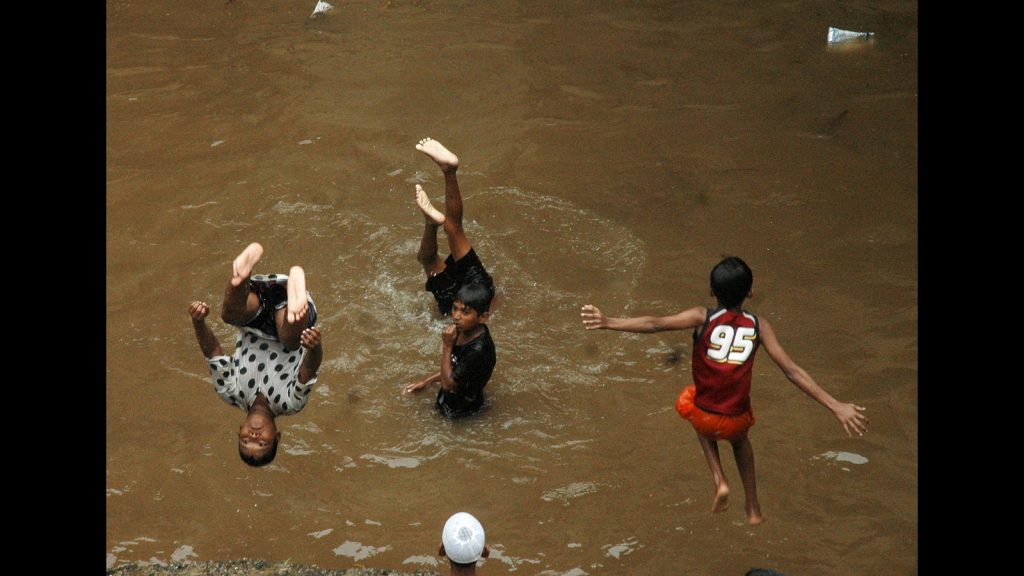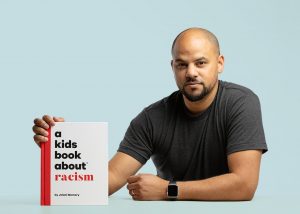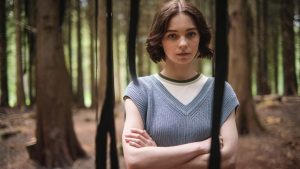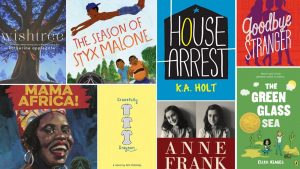Interview: Poor Economics for Youngsters by Esther Duflo and Cheyenne Olivier

In 2011, Nobel Prize-winning economists Esther Duflo and Abhijit Banerjee, who’re married to one another, printed Poor Economics: A Radical Rethinking of the Strategy to Struggle International Poverty. The ebook upended assumptions in regards to the causes of poverty and confirmed how it may be alleviated by parsing by way of proof from the bottom and by making use of the analysis technique the duo utilized in improvement economics. Duflo has now made the work accessible to youthful readers by way of the image ebook Poor Economics for Youngsters, co-authored with the illustrator Cheyenne Olivier. In an interview over Zoom, the duo spoke about their ebook and extra:
Poor Economics attracts on years of your work and a number of analysis research. How did you consider publishing it as a kids’s ebook?
Esther Duflo: I had all the time wished to publish a kids’s ebook. Youngsters’s literature is necessary as a result of what you learn as a toddler has a formative influence in your life. We want books on poverty for kids as a result of there aren’t many.
After we completed Poor Economics, we realised that readers had been significantly delicate to the tales of individuals within the ebook. It was a strong method to talk ideas which might be more durable to convey by way of research or chunks of textual content. Every story makes a specific level. And with fiction, we may synthesise the lives of the numerous, many individuals we had met through the years into fictional characters.
Poor Economics for Youngsters is each fiction and non-fiction. It follows the codes of fiction and has a narrative with a starting and an finish. However every thing that occurs to the characters can occur to somebody in actual life.
Do you additionally discuss your work and subjects resembling poverty and inequality along with your kids? Did their responses play a job in shaping this ebook?
Chayenne Olivier: I don’t have kids, however Esther’s kids had been concerned in shaping this ebook. One of many the explanation why Esther and I ended up working collectively is that I had lived along with her for a while. In some sense, that is additionally how the ebook began. I learnt about Esther and Abhijit’s analysis a lot earlier than interested by doing an image ebook collectively. And he or she additionally had the time to see my illustrations.
The tales and the way in which we deal with the kid characters are primarily based on our interactions with kids. And Esther’s kids had a good quantity of concepts.
Esther Duflo: Folks all the time make enjoyable of me — that I get serious about doing issues round kids the identical age as mine. When my first little one was born, I obtained serious about toddler cognition. When she was about six, I began interested by this ebook and when she was seven, we wrote it. She was concerned in it and mentioned it with us. Now that my youngsters are 10 and 12, I’m serious about middle-school arithmetic. What occurs to my kids is the broader context to a number of my work.
In Abhijit Banerjee’s foreword to the ebook, he says that the tales’ characters stay in a village that may very well be in India, Kenya, Vietnam, or elsewhere. Given that you simply didn’t wish to pin down the geography, how was the method of visualising the ebook?
CO: This was one in all Esther’s first necessities when she proposed this collection. Her work occurs in many countries around the globe and she or he didn’t need the ebook to be linked to a specific nation, ethnic group, or tradition.
As an illustrator, that creates an enormous problem since you depend upon visible references to depict backgrounds, characters, select their pores and skin color, and many others. So, I needed to take a special path. My type, which is geometric and performs with traces, shapes, colors, and fundamental visible components, allowed me to create the imaginary world within the collection. All the pieces is constructed round a restricted set of shapes and colors that I combine and match in order that it turns into a coherent universe, however you may’t pin it down.
However I had to attract flooring, homes, garments, and many others, so I nonetheless wanted references. Esther pointed me to the web site Greenback Avenue, which has photographic information of how folks stay around the globe primarily based on their earnings. I used this database to choose totally different visible features, resembling the form of a pot and patterns on the ground, and mixed them.
Did you additionally take inspiration from artworks and different books whereas creating the visible type for this collection?
CO: I’m very a lot influenced by artists’ books for kids, particularly Russian experiments of the Twenties. They’re geometric, on the verge of abstraction. Folks inform me that my drawings generally echo artwork from a sure interval in Bengal — these had been additionally influenced by the communist aesthetic.
Esther, you talked about that you simply had had the thought for the ebook for a very long time and Cheyenne, you stated you had been residing collectively. What was the method of collaboration on the ebook like?
ED: From the get-go, I envisioned this as a collection of books. In English, it’s printed as one ebook with distinct tales. They revolve round subjects from Poor Economics. Whereas they observe the ebook’s construction, they are often learn in any order.
I’ve had the tales — what occurs in them, what the characters do — in my system for a very long time. I began by conceptualising the narrative as pages of textual content. Cheyenne and I mentioned the textual content and remodeled it right into a 32-page storyboard that depicts what occurs in every body. She additionally flagged points with the tales, resembling logical incoherences, an excessive amount of occurring, issues which might be too temporary to make sense, and many others. She then created pictures as per the storyboard. I might overview these and supply suggestions, resembling this particular person can not presumably be doing that or that doesn’t correspond to folks’s lived experiences. Then, she made the ultimate drawings. It was terribly cooperative. We had been usually actually in the identical room.
Ultimately, our French editor, Céline Ottenwaelter, additionally joined this dance. She has intensive expertise working with kids and on kids’s literature, and she or he contributed lots.
So, it’s not as if I wrote the story, shipped it to Cheyenne for example, after which packed it right into a ebook. It was a totally collaborative challenge!
CO: It was fascinating as a result of I realised I had many prejudices: visible and in any other case. Though I had learn Poor Economist, I inadvertently made errors as a result of they added dramatic aptitude. I felt it might be extra fascinating if a child needed to journey for a very long time to achieve faculty moderately than go to the closest village. However in actuality, that’s not the case anymore.
So, it was good to have my concepts refined and get the chance to do issues in another way. Generally, you may soar straight to the purpose you wish to make, however is that an important factor in a narrative? At instances, now we have to concentrate on the features that make the characters interesting, resembling, say, the connection between a mom and a toddler.
When you could have 32 pages to develop a narrative, you may make some extent on every web page, however you additionally want to offer the reader a break and permit the characters to go about their each day life. There may be an concept that poverty is a relentless collection of dramatic occasions or heroic fights with out pleasure. However that isn’t the case. So, there are pages within the ebook the place kids simply play collectively as a result of that’s what kids do.
Creating a collection was useful on this regard. It allowed us to discover totally different components of the village and see the characters evolve. The instructor is probably not a constructive character initially. She’s offended and frightened within the first story, however helps the children all through the subsequent story.
There are near 50 characters, a lot of whom recur over the ten tales. We fleshed them out in every story whereas sustaining continuity with earlier ones. This was necessary as a result of in Indian languages and French, we printed every story as a separate ebook, however we didn’t need youngsters to have to purchase the entire collection to have the ability to observe them.
What do you assume is the fitting means of introducing kids to ideas resembling poverty, inequality, and environmental crises? It may result in anxiousness and a way of doom, nevertheless it may additionally inspire actions to alter the established order. What has your expertise been on this regard?
ED: That’s a superb query for Cheyenne as a result of she’s conducting educational analysis on easy methods to characterize poverty in kids’s literature.
CO: I’ve been doing workshops with youngsters. They’re drawn to characters as characters, not as poor characters. In the event that they determine with a personality, they’ll take into consideration the problems the character could be dealing with.
In a workshop with migrant kids, the story within the collection about migration helped them discuss their journey to France. It was a great way to provoke a dialogue, although you don’t soar to the subject after one studying.
At festivals, I’ve seen that if we current a ebook as one on poverty or politics, mother and father may not need that. However the identical ebook may be about gender, setting, water, or agriculture, so now we have to speak about it in a means that appeals to folks and youngsters and doesn’t really feel overwhelming.
Making a detour to speak about these points shouldn’t be a foul factor as a result of it turns into a lot simpler to lastly land on them. Though a toddler studying the story may not be poor, they’ll relate to the poor character in lots of different methods. So, taking a look at a difficulty from totally different angles works properly.
ED: I believe a hazard with kids’s literature — and literature generally — is stereotypes and caricature. Relating to poverty, there are sometimes simplistic views and many individuals don’t even wish to give it some thought. However that’s not how one ought to handle any drawback, not to mention one which impacts so many individuals. We’re advanced beings and need to be handled with dignity.
So, the distinction shouldn’t be between doom and gloom and cheerful, however between caricature and human. Life has all types of moments — cheerful, scary, unhappy — and all are within the ebook. The ebook’s aesthetic is predominantly cheerful; that’s what attracted me to Cheyenne’s illustrations from the very starting. They’re vigorous and life will be stuffed with pleasure, or at the very least, that’s what I want to convey.
CO: We tried to make the tales open-ended. We proposed a selected answer, however many issues had been left unresolved, so that allows a number of readings. Youngsters can learn into the tales and pictures — any side can catch their creativeness and propel them into one other world.
EO: The ebook must be readable for everybody, regardless that the presentation could be altered for various sorts of readers. I believe we succeeded as a result of three publishers have introduced it out and every has totally different views about the place and who they wish to promote it to. In France, it’s for younger youngsters and their mother and father, so every story has an essay on the finish for adults.
In India, Juggernaut has marketed the English model to tweens and youths, so it has essays for them. In Bangla, Hindi, Marathi, and many others., they’re meant to be enjoyable books for younger readers, so Pratham Books has printed them individually in low cost volumes with out the essays. They’ve despatched it to libraries everywhere in the nation as a part of their efforts to disseminate high-quality studying supplies.
It’s encouraging that publishers, whose job is advertising and marketing books, assume that the ebook is for everybody and hopefully, readers will assume the identical.
How have readers responded to the collection up to now? In India, it simply got here out, however in France, you printed the tales from 2022 onwards.
EO: Many mother and father stated they wouldn’t learn Poor Economics as a result of whereas it’s for the lay reader, it nonetheless requires focus and maybe some data of economics. They loved studying Poor Economics for Youngsters extra and realized lots from it.
We did a radio present in France the place there have been questions from kids. We realised that they’ve many prejudices, which we hadn’t even thought of. For instance, they thought the poor don’t have any garments or are soiled. It was hanging — lots must be carried out to handle these prejudices.
It was heartening, although, that kids obtained connected to sure characters and saved going again to them. For me, a kids’s ebook is profitable if youngsters wish to hold rereading it and speaking about it.
Top-of-the-line responses was of a four-year-old child who noticed a poor particular person on the road and exclaimed to their mother and father, “That’s the witch from the Bibir story.” The “witch”, after all, shouldn’t be really a witch, however a constructive character. The truth that a toddler in France considered the character from the collection on seeing a homeless particular person is outstanding. It meant the story left a long-lasting impression on them.
CO: Folks appreciated that the universe we created is humorous, not gloomy. Many kids’s image books are set in gloomy city environments. However when mother and father purchase a ebook, they need it to depart a smile on their little one’s face.
Had been there any concepts you wished to discover within the collection, however didn’t embody since you thought they had been unsuitable for kids?
ED: No matter was off-limits. In reality, the other occurred — we included extra subjects, resembling local weather change. These weren’t distinguished in Poor Economics as a result of it was written about 15 years in the past. So, in a way, Poor Economics for Youngsters is extra up-to-date than its predecessor. In fact, we didn’t embody every thing we lined in Poor Economics, however this was to make sure narrative coherence, not as a result of they had been unsuitable.
You must deal with readers as clever beings, no matter their age, and take them significantly. You possibly can discuss every thing, even in a delicate method — you simply have to take the time. Our collection displays that imaginative and prescient.
CO: We even have to contemplate what’s most apt for the story. In Poor Economics, there’s an anecdote the place mother and father beat kids and their instructor. There are numerous methods we may have gone about this: will we present it or say it explicitly within the textual content? Ought to we are saying it within the textual content, however not within the picture? Would these depictions deviate from what we in the end wish to say?
As per our narrative technique, it may not be one thing we wish to emphasise, and due to this fact, we don’t present it. It’s not self-censorship, however a query of what can be best and strategic for the story.
What had been essentially the most difficult and joyful features of creating the story and writing the ebook?
ED: There have been many joys — one was inventing the tales. The opposite was collaborating to embody the tales into this excellent product. The narrative and illustrations gave my work a dimension I by no means dreamt it may have.
There have been no large challenges, however 10 tales is a number of work and took a very long time. I additionally needed to restrain myself from including every thing in order that the tales may very well be streamlined. Inventing tales proved surprisingly straightforward — I may have had many extra.
CO: My background is in comics, so I by no means needed to create such a big universe earlier than. It took effort and time to construct the characters, create totally different environments, and get the colors proper in order that the illustrations are vivid. I swam on this universe for the final 4 years, particularly since my thesis can also be on it.
One other problem was getting the tone proper since youngsters all the time wish to learn one thing more difficult than what they’ll really learn. There’s something real a couple of little one opening a ebook and liking it inside seconds. You wish to obtain that someway. However I may solely know if I succeeded after 4 years of engaged on it. That may be a large problem, but in addition a pleasure when it lastly occurs.
Apart from, earlier than I met Esther, I wished to hyperlink my illustrations to social and environmental points, however I used to be uncertain how to take action. My concepts had been floating and not using a particular placeholder. This ebook gave me the right alternative to do this.
Syed Saad Ahmed is a author and communications skilled.





